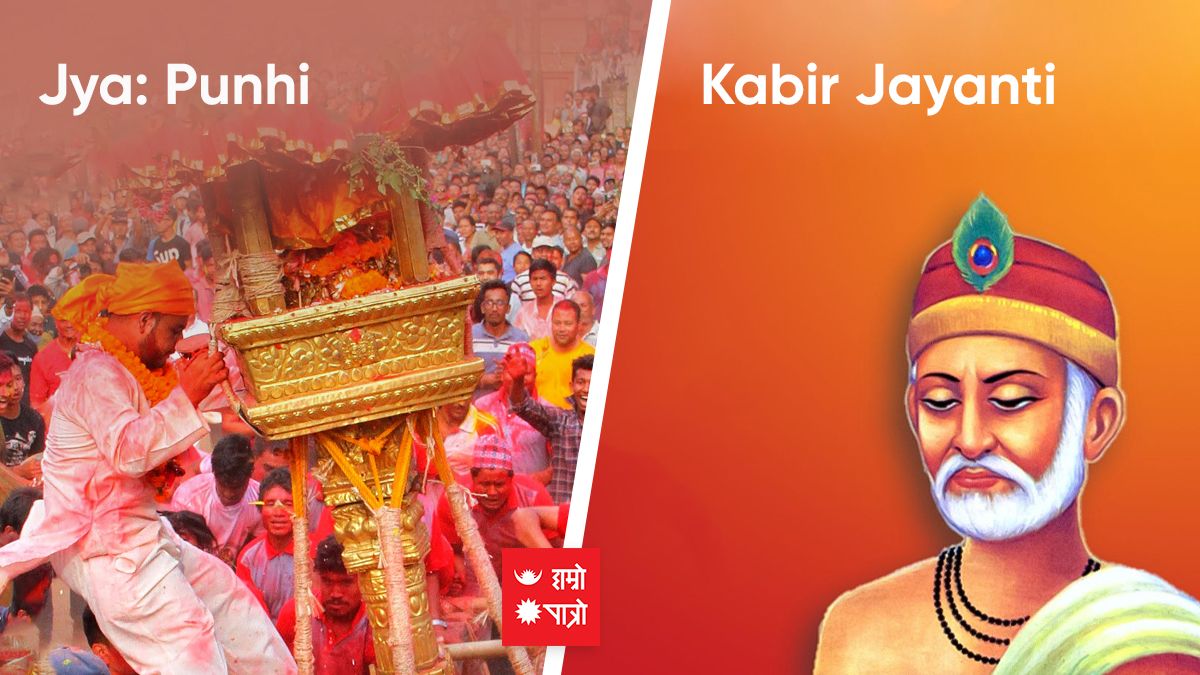
Jya: Punhi
Newa Calender marking Jya Punhi and Panauti jatra
The eighth month of the Newa calendar is Tachala which coincides with the second month of Bikram Samvat. The full moon begins on the 15th day, starting with the new moon. This month is also divided into Shuklapaksha and Chandrapaksha which are called Tachala Thwa and Tachala Ga.
Jya Punhi and its importance in Buddhism
Now let's talk about the day of the full moon which is also called Gaindu Purne. On this day all Hindus and Buddhists celebrate together with joy. For Buddhists, this day is celebrated as Jya Punhi. It is said that Prince Siddhartha left home in search of knowledge on this day. There are some arguments that Buddha left his wife and son at home when he left home and thus disturbed his wife and son by abandoning domestic life and acquiring tragedy but several Buddhist scriptures acknowledge Yashodhara for her contribution and support to Buddha in his knowledge pursuit. In any case, on this full moon, Gautama Buddha gave up his domestic life to gain knowledge. The importance of this full moon is associated with knowledge and sacrifice, so the Newa community celebrates this full moon with joy. The originality of this pilgrimage is connected with the ancient and holy city of Panauti, 30 km southeast of Kathmandu.
The Pauauti city and its ancient importance
As a tributary of the Roshi, Punyamati, and Padmavati rivers, Panauti is a sacred city in Nepal that has been preserving art and cultural heritages for thousands of years. This Jatra is a fest of mating rituals between Lord Unmata Bhairava and Goddesses Bhadrakali. In this rath yatra, the intercourse analogy between Lord Bhairava and Bhadrakali is depicted and indirectly expressed, so it is customary to do some stages of the rath yatra secretly at night. During the rath yatra, the chariots are taken to different places in the city, and water is sprinkled on the chariots.
It takes 9 days to complete the Archana and Jatra versions of Jya Punhi, therefore the arrival and departure of Punhi last for 9 days. Dashami of Shuklapaksha, the Achanju priest offers sacrifices to the Tantric deities. On this auspicious day, the holy bath in the Punyamati Khola and Roshi Khola, also known as Roshimati are of special importance. This ritual is also called the Panauti bath.
We want to tell a little legend about when the river Punyamati was flooded many years ago and the priest had to cross the river to worship Brahmani and Bhadrakali. At the same time, the story of the priest crossing the river with the help of Vasuki Nag is heard throughout the procession.
This year's Jya Punhi or Panauti Punhi or Gaihu Purne, whatever you say, best wishes for this Purne. May the calm, civilized, positive, and inspiring energy always move in our life like the full moon of Shukla paksha.
Kabir Jayanti
When is Sant Kabir Jayanti?
According to the Hindu lunar calendar, Sant Kabir Jayanti is celebrated on the day of Jyeshtha Purnima, the full moon in the Hindu month of Jyeshtha. This means it normally takes place in late May or June.
History of Sant Kabir Jayanti
Jayanti means birth anniversary and Sant Guru Kabir Jayanti marks the birthday of Sant Kabir, an Indian mystic poet and saint who lived in the 15th century. His writings and work influenced Hinduism's Bhakti movement and his verses are also found in the Sikh scriptures of Adi Granth.
The year of Kabir's birth is open to debate, with arguments made for both 1398 and 1518, though whatever the year, it is commonly accepted that he was born and raised in a family of Muslim weavers.
Despite his Islamic background, Kabir became a disciple of the Hindu Bhakti saint Ramananda. Until other Gurus and Saints of the time, Kabir lived the simple life of a weaver. He got married and had children. During his life, he suffered some degree of persecution from both Muslims and Hindus, yet on his death, both religions tried to claim the body.
That legacy of Kabir continues through the Path of Kabir (Kabir panth), a religious community that recognizes him as its founder and is one of the Sant Mat sects. The members are known as Kabir panthis.In 1915, Kabir's poetry was brought to a wider audience when his work was translated into English by the famous Bengali polymath, Rabindranath Tagore.
-Suyog Dhakal
Liked by: